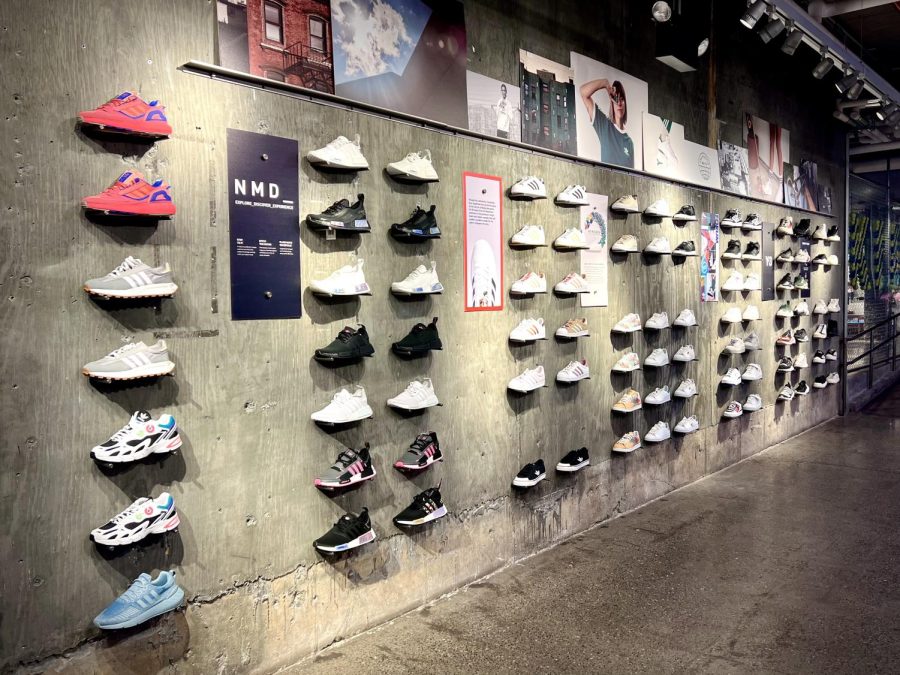Russian invasion of Ukraine impacts luxury brand market
March 19, 2022
In light of Russia’s invasion of Ukraine, many major businesses have ceased operations in Russia and Ukraine. While both countries do not represent a large portion of the global market share, this lack of access to them for both markets and producers has been felt. A surprising and potentially overlooked casualty of this conflict has been American luxury fashion brands, which have a large amount of their market and production in Russia and Ukraine.
Like many countries that have seen a substantial increase in GDP and standards of living in a relatively short amount of time, Russia has developed a particular taste for luxury brands and currently accounts for 5% of the global market. Many crucial trade routes from Asia to the West, where the majority of luxury brands are still produced, have been cut off by the conflict, both overland through Russia by rail and through the Black Sea.
However, the production rather than consumption of luxury fashion brands might be the hardest hit.
After Russia’s invasion of Crimea in 2014, Vice reported on Kyiv’s burgeoning rave scene. While Vice interviewed the party organizers, the lead rave director offhandedly mentioned that they were able to find great deals on fashion in the open-air markets of downtown Kyiv because it was cheaper to produce clothing in Ukraine than in China.
This trend has only increased since then, as Ukraine has sought to pull itself by any means out of the economic recession that came with the 2014 revolution.
Brands such as Hugo Boss AG, Tommy Hilfiger Licensing LLC, Zara SA, Adidas AG and Marks and Spencer Group plc have established factories in Ukraine and undercut existing sites around the world, including in dominant clothing manufacturing countries such as China and Bangladesh.
There are currently 2,500 factories in Ukraine dedicated to textiles, clothing and footwear, with 240,000 employees and 80-90% of production destined for the export market, according to a Ukrainian government website. These factories accounted for $1.18 billion in exports in 2019, but this is likely only the amount that is officially recorded “on the books.”
A large amount of Ukraine’s economy since 2014 has been conducted in the “gray market,” where transactions are not done illicitly out of sight but are still largely off the books. This was particularly true given the immediate aftermath of the 2014 revolution and invasion, when the government was often unable and uninterested in keeping tabs on many sectors of the economy, so many producers had to organize more informal connections.
This arrangement has often benefited many international brands, luxury fashion included, who found themselves suddenly able to operate within a European country without having to pay European level taxes or follow European regulations.
Sweat shops proliferated throughout Ukraine, which are now competitive with some of the poorest countries in the world but can still put “made in Europe” on their labels.
These sweatshops are usually inadequately heated and ventilated, experience frequent industrial accidents with accompanying injuries and pay their mostly female staff subsistence wages, often beneath the already meager Ukrainian minimum wage. These conditions have prompted many to try to find work elsewhere even before the 2022 invasion, most often in other parts of Europe, but pickings are often slim and many have no choice but to work in these inhuman conditions.
Even though this unstructured and largely informal production was disrupted by the 2022 invasion, many American fashion brands — particularly Levi, Hugo Boss and Adidas — are being hit particularly hard. Adidas alone is expected to lose 100 to 400 revenue points in yearly revenue growth, according to Reuters.
As the world holds its breath and anxiously watches the developments between Russia and Ukraine, it remains unclear whether a unified and rejuvenated Ukraine will be able to restart and revitalize fashion production, or if American fashion brands will have to find other markets and producers of their products.







